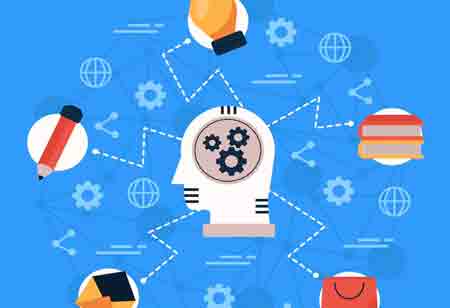THANK YOU FOR SUBSCRIBING
Be first to read the latest tech news, Industry Leader's Insights, and CIO interviews of medium and large enterprises exclusively from Gov CIO Outlook
THANK YOU FOR SUBSCRIBING

By
Government CIO Outlook | Monday, September 15, 2025
Stay ahead of the industry with exclusive feature stories on the top companies, expert insights and the latest news delivered straight to your inbox. Subscribe today.
Fremont, CA: Artificial intelligence (AI) can improve national emergency preparedness and response systems. By utilizing generative AI, organizations can enhance access to information, streamline decision-making processes, and create more efficient early warning systems. This technology can be used in various ways, including real-time data analysis, scenario simulations, and sentiment analysis, all aimed at simplifying complex information management. The versatility of AI presents valuable opportunities to strengthen disaster relief efforts and enable timely analysis in critical situations.
● Early Warning Systems and Sentiment Analysis: Generative AI is a powerful tool for early warning systems and sentiment analysis, enabling connections between disparate systems. It can provide accurate warnings, analyze public sentiment, detect bad actors, identify misinformation, and tailor communications for precise information dissemination, making it a valuable tool for leaders.
● Scenario Simulations: Generative AI can improve catastrophe modeling for better crisis assessment and resource allocation by creating simulations for emergency planners using historical data like location, community impact, and financial consequences. These simulators often perform tasks that exceed human capacity, such as finding flooded or unusable roads after a hurricane.
● Real-Time Coaching and Training: Generative AI can aid in training responders and reducing surge costs during large disasters. It can listen to government call center conversations, prompt staff to provide contextually relevant information and provide instructions for new practitioners on various topics, thereby reducing the workload of disaster survivors.
● Support Community Goodwill Efforts: Generative AI can provide real-time information, basic first aid, and health knowledge to affected communities during crises. It can help locate impacted areas and disseminate health and safety knowledge, enhancing community goodwill during preparation, response, and rebuilding.
● Decision Support Systems: AI-powered systems can analyze data during crises to provide informed recommendations on evacuation, resource allocation, and community engagement. With real-time weather data, population characteristics, and infrastructure statistics, they can assist individuals displaced by disasters by suggesting shelter, resources, and personalized communication channels.
● Post-Crisis Analysis: Generative AI can enhance emergency management by assessing response effectiveness, resource allocation, and evacuation plans, enabling leaders to improve future crisis management strategies.
Emergency managers view disasters as recurring events with four phases: mitigation, preparedness, response, and recovery. Gen AI can accelerate preparedness and recovery by providing real-time coaching, decision support, and administrative functions, enabling quicker and more resilient community recovery in complex emergencies.
I agree We use cookies on this website to enhance your user experience. By clicking any link on this page you are giving your consent for us to set cookies. More info



